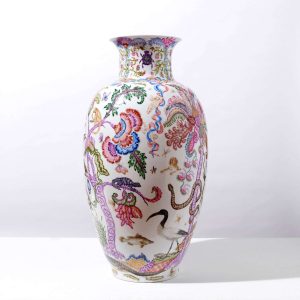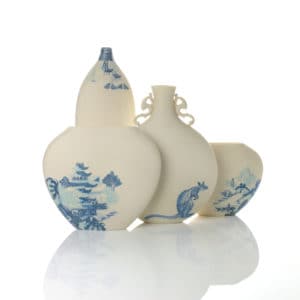
More about Elizabeth and Akbar – Trade Begins, 2013
In 1585 Elizabeth I sent the following letter to Akbar I the powerful Mogul ruler of India in the attempt to open trade relations between their two countries.'Queen Elizabeth of England by the grace of God Defender of Faith. To the most invincible and most mightie prince, Lord Zelabdim Echebar King of Cambaya. Invincible Emperor. The great affection which our subjects have to visit the most distant places of the world, not without good will and intention to introduce the trade of marchandize of al nations whatsoever they can, by which meanes the mutual and friendly trafique of marchandize of both sides may come, is the cause that the bearer of this letter John Newbery jointly with those that be in his company, with curteous and honest boldnesse, doe repaire to the borders and countreys of your Empire, we doubt not but that Your imperial Majestic through your royal grace will favorably and friendly accept him. And that you would doe it the rather for our sake to make us greatly beholding to your Majestic: wee should more earnestly, and with more wordes require it, if wee did think it needful. Ut by the singular report that is of your imperial Majesties humanitie in these uttermost parts of the world, we are greatly eased of that burden, and therefore wee use the fewer and lesse words: onely we request that because they are our subjects, they may be honestly intreated and received. And that in respect of the hard journey which they have undertaken to places so far distant, it would please your Majestic with some libertie and securitie of voiage to gratifie it, with such privileges as to you shall seeme good: which curtesie if your Imperiall majestic shal to our subjects at our requests erforme, wee, according to our royall honour, wil recompence the same with as many deserts as we can. And herewith we bid your Imperial Majestic to farewel.'
Iconography
Elizabeth is represented by the image of the lion; both of which have been taken from famous tapestries. The first, known as ‘The Lion of Justice’ dated around 1523 – 1534 is from the ornamental cover of the throne of Clement VII of Brussels and the reverse image from ‘The Forest Tapestry’ designed by William Morris and woven by the Merton Abby Workshop in 1887. The decorative forest iconography is taken from a cushion cover tapestry woven at the famous Sheldon Tapestry Workshop in around 1600.
Akbar is represented by paintings of Indian elephants that were copied from the original 19th century natural history drawings done by Europeans. The Chintz pattern printed in India for the English market is dated at around the end of the 17th century and the pattern copied from English crewel embroidery.
All of the imagery from these two vases can be found in the textile collection of the Victoria and Albert museum except the 'The Lion of Justice’ that is housed In the Vatican and the elephant paintings that are possibly German in origin.








